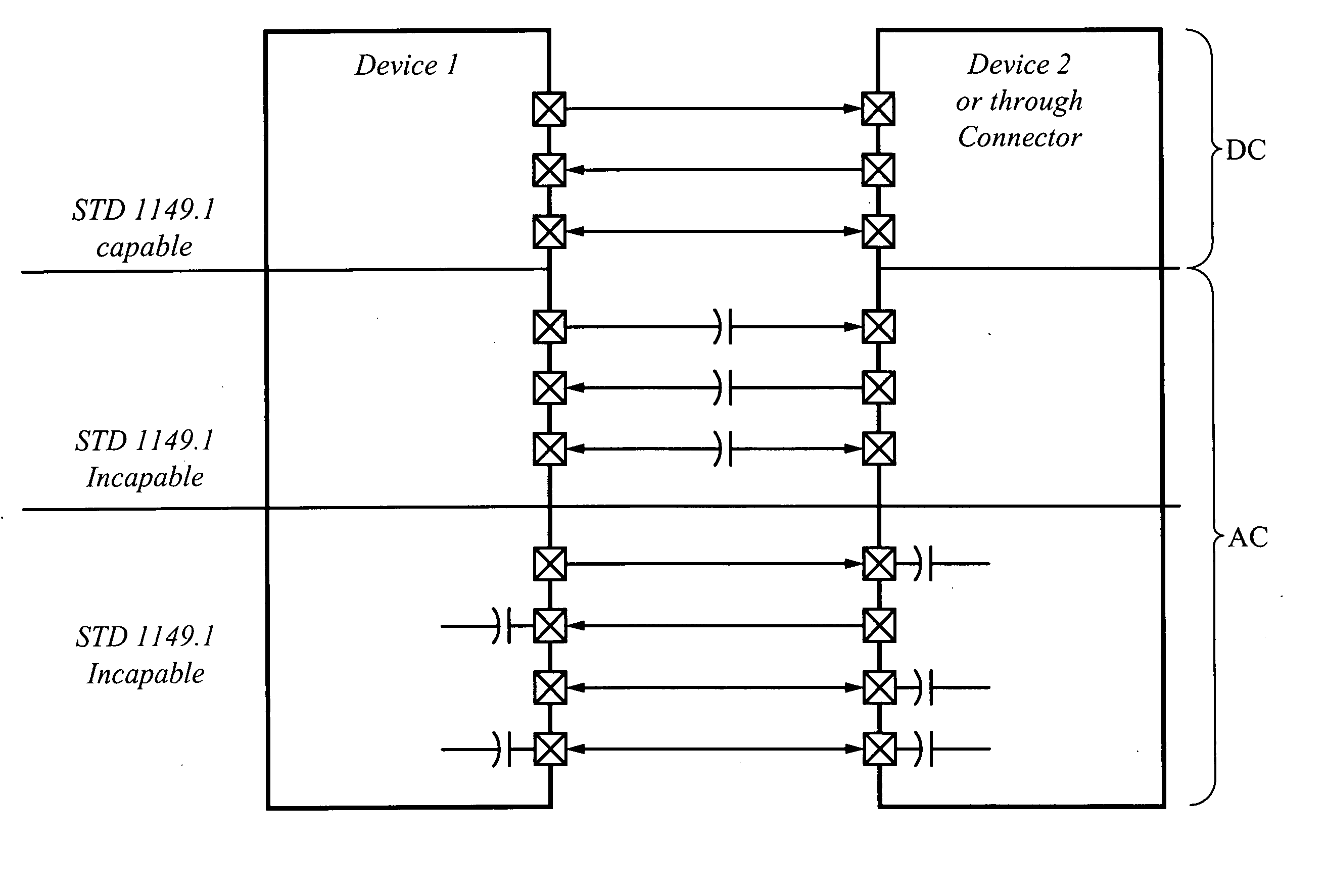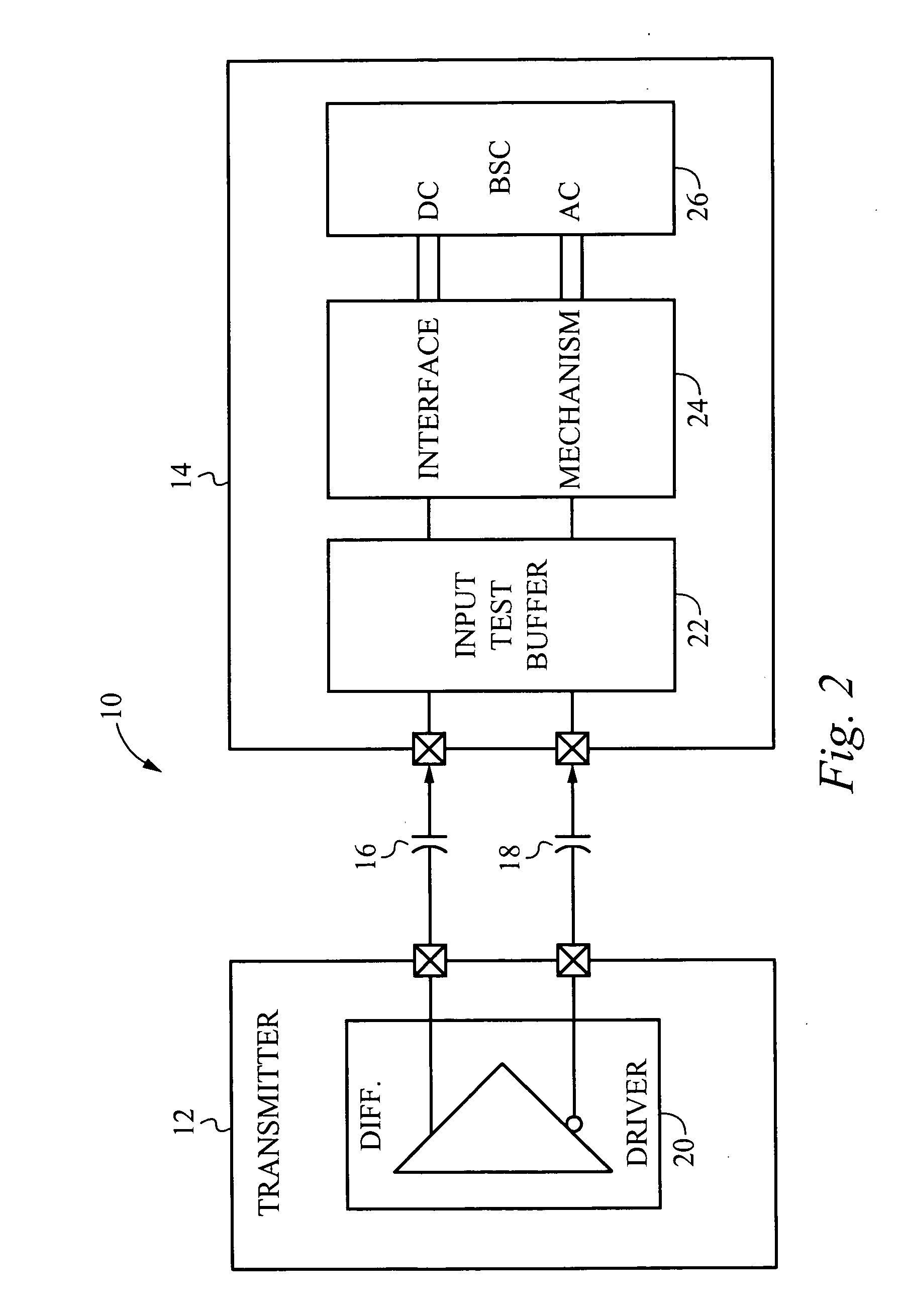Test buffer design and interface mechanism for differential receiver AC/DC boundary scan test
a test buffer and ac/dc technology, applied in the field of boundary scan testing, can solve the problems of 1149.1 not addressing all situations, design practices, and conventional 1149.1 testing becoming impractical on ac coupled interconnections
- Summary
- Abstract
- Description
- Claims
- Application Information
AI Technical Summary
Benefits of technology
Problems solved by technology
Method used
Image
Examples
first embodiment
[0036] Turning now to FIG. 4, a block diagram of the input test buffer 22 of FIG. 2 is shown. The actual design of the input test buffer 22 can be selected from a number of designs available in the prior art. The one stipulation is that the design have built-in null detection capability, that is, if the differential voltage between the two signal inputs is not greater than a predefined threshold, then both of the output signals become the same value to identify a null condition. The null condition indicates that one of the five fault syndromes of FIG. 3 has been detected. Here the output signals have been labeled RESET and SET. The input test buffer 22 includes a first amplifier 28, a second amplifier 30, a first resistor 32, and a second resistor 34 connected as shown. The two amplifiers 28 and 30 process the incoming differential AC signal separately and amplify differentially against a common mode voltage provided by the two resistors 32 and 34.
second embodiment
[0037] Turning now to FIG. 5, a block diagram of the input test buffer 22 of FIG. 2 is shown. The input test buffer 22 includes a first amplifier 36, a second amplifier 38, a first resistor 40, a second resistor 42, a third resistor 44, a fourth resistor 46, a fifth resistor 48, and a sixth resistor 50 connected as shown. In this case, the common mode voltage signal Vcom is an input as well. The output signals are still RESET and SET.
third embodiment
[0038] Turning now to FIG. 6, a block diagram of the input test buffer 22 of FIG. 2 is shown. The input test buffer 22 includes a first amplifier 52, a second amplifier 54, a first resistor 56, a second resistor 58, a third resistor 60, and a fourth resistor 62 connected as shown. In this case, the common mode voltage point is the node between the second resistor 58 and the third resistor 60. The output signals are now RESET BAR and SET BAR.
PUM
 Login to View More
Login to View More Abstract
Description
Claims
Application Information
 Login to View More
Login to View More - R&D
- Intellectual Property
- Life Sciences
- Materials
- Tech Scout
- Unparalleled Data Quality
- Higher Quality Content
- 60% Fewer Hallucinations
Browse by: Latest US Patents, China's latest patents, Technical Efficacy Thesaurus, Application Domain, Technology Topic, Popular Technical Reports.
© 2025 PatSnap. All rights reserved.Legal|Privacy policy|Modern Slavery Act Transparency Statement|Sitemap|About US| Contact US: help@patsnap.com



